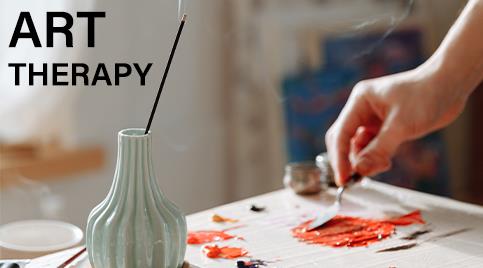Get 10% Off*, Use Code: HPDS25
Get 10% Off*, Use Code: HPDS25

Stressful and traumatic events can leave an enduring imprint on those who experience them. Some people are able to process these events and some others have difficulty and require some assistance. The latter part of that statement can involve those who suffer from Posttraumatic Stress Disorder or PTSD. It doesn’t matter the trigger, but finding the proper therapy to help treat PTSD can be a life-saving event for those with this disorder. We here at HPFY may be able to help through the use of art therapy to treat these unseen wounds.
I’m sure just about everyone is come across the term PTSD, but do we understand exactly what it entails and its effects? Posttraumatic Stress Disorder has its origins with the term Shellshock, evolved into battle fatigue syndrome, and now the accepted term is PTSD. Posttraumatic stress disorder is a serious condition that rears its ugly head when someone has endured a horrifying or traumatic event. WebMD.com states some of the symptoms of PTSD may include:
Since everyone reacts differently to traumatic events, not everyone will develop PTSD. This disorder can be experienced by military personnel in combat, first responders, and even a child or sexual abuse survivors.

Therapy to treat posttraumatic stress disorder has made great strides throughout the years. A number of different treatment methods are used including Cognitive Processing Therapy (CPT), Prolonged Exposure (PE) therapy, and biofeedback therapy. Therapies help treat those with PTSD by working through memories that trigger emotional and/or physical responses of PTSD until they no longer cause symptoms. They say pictures are worth a thousand words and the use of Art Therapy is another great way to help those suffering from PTSD. Art therapy uses a multitude of creative outlets for those with posttraumatic stress disorder to deal with their symptoms by expressing words and thoughts with pictures. These can include painting, coloring, and sculpturing among many creative, calming activities. It allows for a safe outlet and creates separation from the traumatic events that triggered episodes of PTSD. The American Art Therapy Association points to four contributions of art therapy for PTSD as:
This is more than just some kind of art class we used to have in grade school. Using Art therapy allows military members, first responders and survivors of abuse the outlet to re-acclimate themselves into everyday life. It may seem minuscule but PTSD survivors need all the help they can get and art therapy can provide them with the proper, calming outlet for success.
Disclaimer: All content found on our website, including images, videos, infographics and text were created solely for informational purposes. Our content should never be used for the purpose of diagnosis or treatment of any medical conditions. Content shared on our websites is not meant to be used as a substitute for advice from a certified medical professional. Reliance on the information provided on our website as a basis for patient treatment is solely at your own risk. We urge all our customers to always consult a physician or a certified medical professional before trying or using a new medical product.

Kevin Cleary has been a Health Products For You contributor for many years and has a degree in marketing. His health and wellness journey has a very personal meaning and has guided him in his content writing for HPFY.
In 2006, ...
How To Increase Iron Levels Quickly
It’s a question that must have puzzled you like many others. Iron is essential in hemoglobin production and its inadequate levels can negatively impact your health. Dive into this informative article to explore top iron-rich foods that can help you fight iron deficiency.
10 Best Coccyx Cushions for Tailbone Pain
If you're like most people, you spend about 8 to 10 hours sitting every day. However unhealthy, it is part of life for many, and can cause tailbone pain. Coccyx cushions can help alleviate this pain. Click to read more and find the perfect coccyx cushion for your tailbone pain.
5+ Best Adult Diapers for Fecal Incontinence
Dealing with fecal incontinence can be challenging, but you're not alone. Read this article and navigate through discreet and effective solutions that help you manage fecal incontinence and let you live life on your terms with confidence and comfort.
Top 5 Best Reviewed Nebulizers of 2024
Need an effective and affordable nebulizer? Look no further, in this article we offer 5 of our best reviewed nebulizers that are loved by our customers. Click to read more and find the perfect nebulizer for all your respiratory needs.
10 Best Penis Pumps For Erectile Dysfunction
For anyone dealing with erectile dysfunction, penis pumps serve as a great way to manage it. But with so many products available, determining the best one for your needs can be challenging. To assist you in refining your choices and making an informed decision, here are our top 10 options, recognized for their effectiveness and safety.